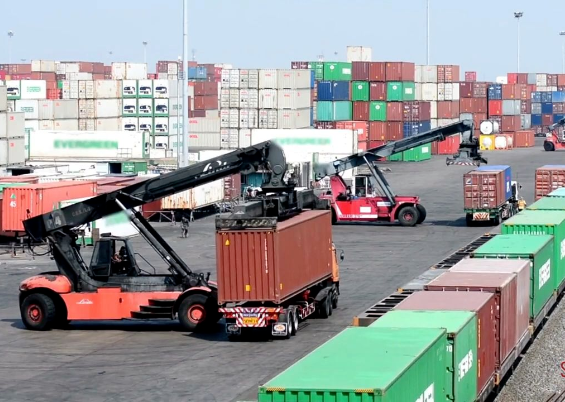How do goods cross the vast continent of the United States and Canada? The whole railway transportation process is revealed!
 2025-08-28
2025-08-28
 48
48
1RAILWAY
When your Container is unloaded from the giant ship, its journey into the North American interior has just begun. How to cross the vast continent of thousands of kilometers? The answer is not only the speeding truck, but also the roaring steel camel team. Sea-rail combined transport is the economic artery connecting ports and inland hinterland. Today, Shenzhen Great Link Company will take you to simulate the whole journey and uncover every detail of this efficient journey. 01 Port Landing and "Connection Transfer" Port Operation & Intermodal Transfer Unloading and Customs Clearance: "Your Container was unloaded steadily from the ocean-going ship and did not stay in the congested terminal for a long time. Our operation team has already completed the customs clearance procedures for it, and waiting for the professional terminal operation team to Break bulk it with a huge gantry crane, and then hoist it to the long-awaited railway flat car by a crane."
02 Step foot on the "Steel Artery" and start the journey The Rail Journey: On the Steel Arteries This is the core of the journey-railway transportation. In Canada, your goods will be mainly carried by two 'giants': Canadian Country Railway (CN) or Canadian Pacific Railway (CP). They are like "steel arteries" with exclusive tracks, fixed shifts, and are not affected by weather and traffic congestion. Your Container will be joined by thousands of other boxes to form an efficient, environmentally friendly freight train that will sail day and night to the core hub inland.
03 Arriving at the hub and the "last mile" "Arrival at Ramp & The Final Mile1. Arrival Inland Hub Station Trains eventually stop at inland core hubs such as "Chicago, Toronto, Memphis, etc.". Container will be safely unloaded here and awaits final delivery. 2. Seamlessly connect the "last mile". We arranged the local truck fleet in advance and go to the railway station to pick up the suitcase with the pick-up slip. Professional truck drivers will deliver the goods safely and on time to your designated warehouse, or designated Break bulk locations.
04Sea-rail combined transport:
Four key considerations 1. Planning Lead Time The overall travel time (TT) of sea-rail combined transport requires scientific planning. Although the railway section itself is very fast, it needs to reserve enough time for internal port operations (unloading, reloading), railway marshalling, and last mile carpai. Overall, compared with shipping at Direct ports, it is necessary to reserve 3-7 days more flexible time. 2. Accurate declaration of product name and cargo weight. Railway transportation is extremely strict in the review of cargo weight and product name. For sensitive goods such as chemicals and batteries, please be sure to confirm in advance whether they belong to the acceptable dangerous goods range of railways and the corresponding danger level. For inland delivery, please be sure to accurately verify the weight of the goods. The railway company will conduct secondary weighing and repeated verification before loading. If there is concealment or false report (especially weight deviation), it may lead to huge fines or even refusal of loading, and all risks and expenses arising therefrom will be borne by the cargo owner. 3. Precise control of the rent-free period (Free Time) Sea-rail combined transport will involve the rent-free period of the port and the rent-free period of the destination railway station. The Free Time at the railway station is often less than that at the port. If you don't need us to arrange delivery, you need to complete the suitcase as soon as possible to avoid high container Detention charge and Warehousing. 4. Provide accurate Final Destination information. The detailed address, zip code and contact phone number of the Final Destination (Final Destination) must be 100% accurate. The accuracy of the information directly determines whether the "last mile" truck delivery can be completed efficiently. If the address error occurs or the address is temporarily changed after the goods arrive at Hong Kong, additional reassignment costs will inevitably be incurred and the delivery time will be delayed.
























